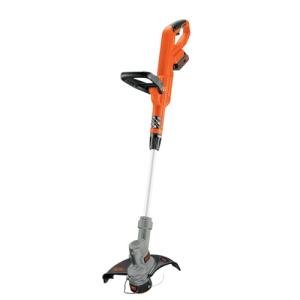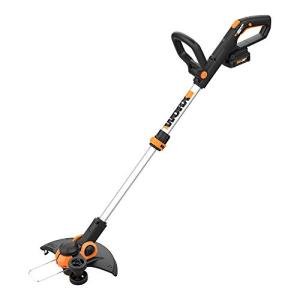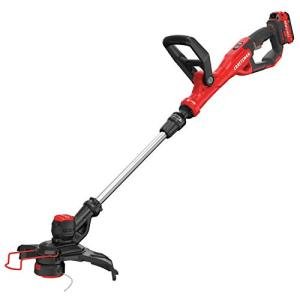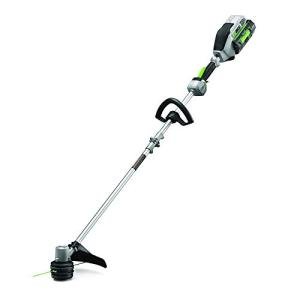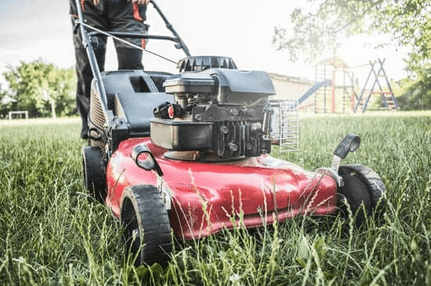Discover top picks for hassle-free mowing that get the job done right:
Gas-powered self-propelled mowers are staples for anyone with medium or big lawns. They use gasoline engines and a drive system that pushes the mower along for you, making yard work a lot less exhausting.
This comes in handy on hills or rough patches, where push mowers can feel like a workout.
You’ll find these mowers with all sorts of features—adjustable speeds, various cutting widths, and different engine sizes. They’re tough enough for thick grass and longer jobs, and a lot of them start up with just a quick pull.
Some even have adjustable handles, which is honestly a back-saver.
If you’re shopping for a gas-powered self-propelled mower, think about engine strength, weight, and whether the drive system matches your yard’s layout. Starting and maintenance ease, plus cutting width, matter too—especially if you’ve got a lot of ground to cover.
We spent some time testing and comparing models to find the best mix of power, reliability, and convenience for most folks.
Best Gas-Powered Self-Propelled Mowers
We tried out a bunch of gas-powered self-propelled mowers to see which ones were the most reliable and simple to use. There’s something here for every yard size and budget, so you can pick the right fit for your lawn.
SENIX LSSG-M9 21-inch Gas Self-Propelled Mower
This mower is a good match for small to medium lawns, offering solid power and easy handling at a reasonable price.
Pros
- Strong Briggs & Stratton engine with reliable starts
- Three mowing options: bagging, mulching, side discharge
- Adjustable height and good maneuverability on uneven ground
Cons
- Front-wheel drive can struggle on very steep hills
The SENIX LSSG-M9 started up easily every time for us, thanks to its Prime N’ Pull system. The engine runs quietly and feels sturdy—no sputtering or weird noises, even in thick grass.
We liked the 3-in-1 design, which let us switch from mulching to bagging without a hassle. The 16-gallon bag handled a decent amount before needing to be emptied, which is nice if you don’t want to stop every five minutes.
Cutting height adjustments were quick and didn’t require any tools, so you can fine-tune on the fly. Front-wheel drive made it light to steer, but on steep slopes, you’ll want to put in a little extra muscle.
The grass catcher could be built tougher, honestly. Still, for regular lawn care, this mower is practical and doesn’t ask for much compromise.
YARDMAX 22 in. Select PACE Self-Propelled Mower
If you want adjustable speed and strong traction in a gas mower, this YARDMAX is worth a look.
Pros
- Adjustable pace with 6-speed CVT transmission
- Strong grip from aggressive tread tires
- Easy deck cleanup with built-in hose port
Cons
- Speed settings can feel too fast for some users
The YARDMAX started up on the first pull, thanks to its automatic choke. We liked being able to match the mower’s pace to our walking speed—no more chasing a runaway mower or dragging your feet.
The rear-wheel drive gave us good grip on uneven spots, and the deck design made it easy to switch between seven height positions with a single lever. Mulching and bagging worked well, too.
The grass catcher, though, was a pain. The small opening and awkward hooks slowed us down every time we had to empty it. Also, the fastest speed felt a bit much; you might find yourself jogging behind it if you’re not paying attention.
On rough terrain, the wheels sometimes slipped even with the tread. But if you can put up with the bag design, this mower offers good power and adjustability for the price.
PowerSmart 21-Inch Gas Mower
This mower brings solid power and versatility for medium to large yards, but there are some durability quirks you’ll want to know about.
Pros
- Strong 140cc engine starts easily
- Self-propelled with large wheels for better control on slopes
- Multiple mowing options: bagging, mulching, and rear discharge
Cons
- Heavier than expected, making storage tricky
The PowerSmart felt sturdy at first, with a smooth pull-start and enough strength to get through thick patches of grass. That 21-inch cutting width means you don’t have to make as many passes, which is always a plus.
Switching between bagging, mulching, or rear discharge was simple, and the rear-wheel drive kept traction steady on bumpy ground. Adjusting the six height settings was a breeze with one lever.
But after a few uses, we noticed some issues—plastic around the blade could crack or jam, sometimes shutting the mower off. It’s also heavier than it looks, which makes storage or long sessions a bit of a chore.
Customer support wasn’t always responsive, either. If you’re okay with a little maintenance and want a decent gas-powered option for bigger yards, it’s worth considering.
PowerSmart 21-Inch Gas Self-Propelled Mower
This one’s a solid pick for small to medium yards if you want decent power without spending too much.
Pros
- Strong 140cc engine handles thick grass without choking.
- 21-inch steel deck cuts wide and feels durable.
- 3-in-1 cutting options let us bag, mulch, or discharge easily.
Cons
- The self-propelled speed is a bit too fast to control comfortably.
Starting this PowerSmart was easy, even in wet or tall grass. The rear-wheel drive helped on uneven spots, but the speed took a little getting used to—you might have to slow it down for tight corners.
The steel deck gave us a clean cut without too many passes, so mowing didn’t drag on. Switching between bagging, mulching, and rear discharge was straightforward and helpful depending on the day.
Setup was a bit of a mess, though. Some units had bent wheels or missing parts right out of the box. Also, the fast speed made it tricky on slopes if you’re not careful. For the price, though, it’s a decent self-propelled mower for budget-minded buyers.
SENIX LSSG-H2 Mower
This mower brings solid cutting power and easy handling, making yard work less of a chore for small to medium lawns.
Pros
- Cuts efficiently with a 22-inch wide blade
- Front-wheel drive makes it easy to push on uneven ground
- Adjustable cutting height fits different grass lengths
Cons
- Heavier than some other mowers so that it can feel bulky
- Single speed limits faster mowing in open spaces
The 22-inch cutting width was just right for most yards—enough to finish quickly without losing control. The front-wheel drive made steering through bumpy spots pretty easy, saving our backs on longer sessions.
Switching between mulching, side discharge, and bagging was simple, so you can adjust to your lawn’s needs. Adjusting the height was straightforward too just a quick flick of the lever.
The engine started up without drama and powered through thick grass well. It’s a bit heavy, so corners and hills might need some effort. But if you want a reliable, user-friendly mower that packs decent power in a compact size, this one’s worth a look.
Buying Guide
When you're picking out the best gas-powered self-propelled mower, there are a few features that really make a difference. First, engine power stands out stronger engines handle thick or tall grass way better.
The mower's cutting width is worth considering too. A wider deck helps you finish up faster, but it can be a pain to steer around small corners or tight spots.
Honestly, yard size and shape should probably guide your choice more than anything here. If you have a lot of narrow paths, consider not going too wide.
The self-propelled system itself is another biggie. Some mowers let you set the speed, which is a lifesaver on hills or bumpy ground.
It's easier if the speed changes smoothly. Nothing worse than a mower that lurches or drags you along.
Cutting height adjustment? Super important. You want to change the height for different seasons or grass types, and if the controls are clunky, it's just an extra hassle.
Weight is one of those things you don't think about until you're sweating in the sun. Heavier mowers feel solid, but they can be a beast to push if the self-propelled feature acts up.
Lighter ones are easier on your arms, but sometimes they bounce around or feel flimsy. It's a trade-off, honestly.
Here's a quick table to help you compare the stuff that matters most:
| Feature | What to Look For | Why It Matters |
|---|---|---|
| Engine Power | At least 140cc for average yards | Strong enough for thick grass |
| Cutting Width | 21-22 inches for smaller yards | Easier to navigate tight spots |
| Speed Control | Variable speed preferred | Better control on hills |
| Cutting Height | Multiple easy adjustments | Adapt to grass types |
| Weight | Balanced for stability and ease | Comfortable to use |
Frequently Asked Questions
We dig into top models, fuel use, power, and all those little features that actually make a difference. Maintenance, price, and drive systems—yeah, those matter too.
What are the leading gas-powered self-propelled lawn mowers on the market currently?
The Honda HRX217VKA and Toro Recycler 20333 get a lot of praise. Both have reliable engines and a self-propelled drive that feels smooth, not jerky.
How do fuel efficiency and power compare among top self-propelled mower models?
Honda mowers usually win on fuel efficiency, thanks to their GCV engines. Toro tends to bring more power, but you'll probably notice it drinks a bit more gas.
What maintenance should be expected with high-performance gas self-propelled mowers?
You'll need to change the oil and clean the air filter regularly. Keep the blade sharp and swap out the spark plug occasionally—basic stuff, but it makes a difference.
Can you recommend features to look for in a durable self-propelled lawn mower?
Go for a sturdy steel deck, adjustable speed, and a brand with a good engine reputation. Controls that don't fight you and a mower that's easy to steer? That's a win.
What is the typical price range for the most reliable self-propelled mowers?
Most solid models run between $300 and $600. If you want all the bells and whistles, expect to pay a bit more.
How do different drive systems in self-propelled mowers affect their maneuverability?
Rear-wheel drive pops up a lot, especially for folks with flat yards. It's straightforward and gets the job done.
Front-wheel drive, though, feels a bit nimbler if your lawn's got bumps or dips. You can pivot more easily, which is nice if you hate wrestling with your mower.
And then there are all-wheel drive models—those are for the stubborn, rough patches where nothing else seems to grip. They're not for everyone, but sometimes you just need that extra oomph.






